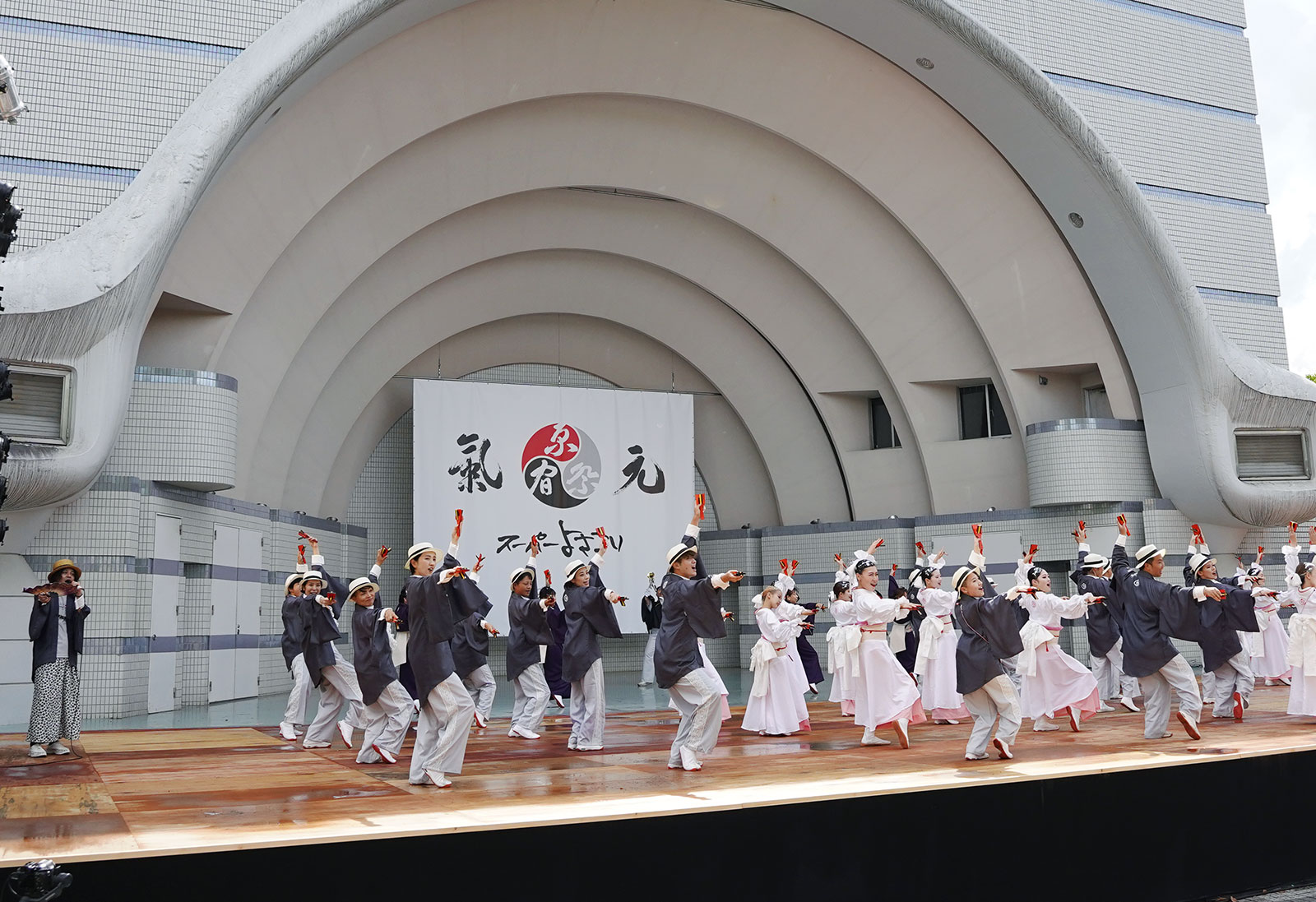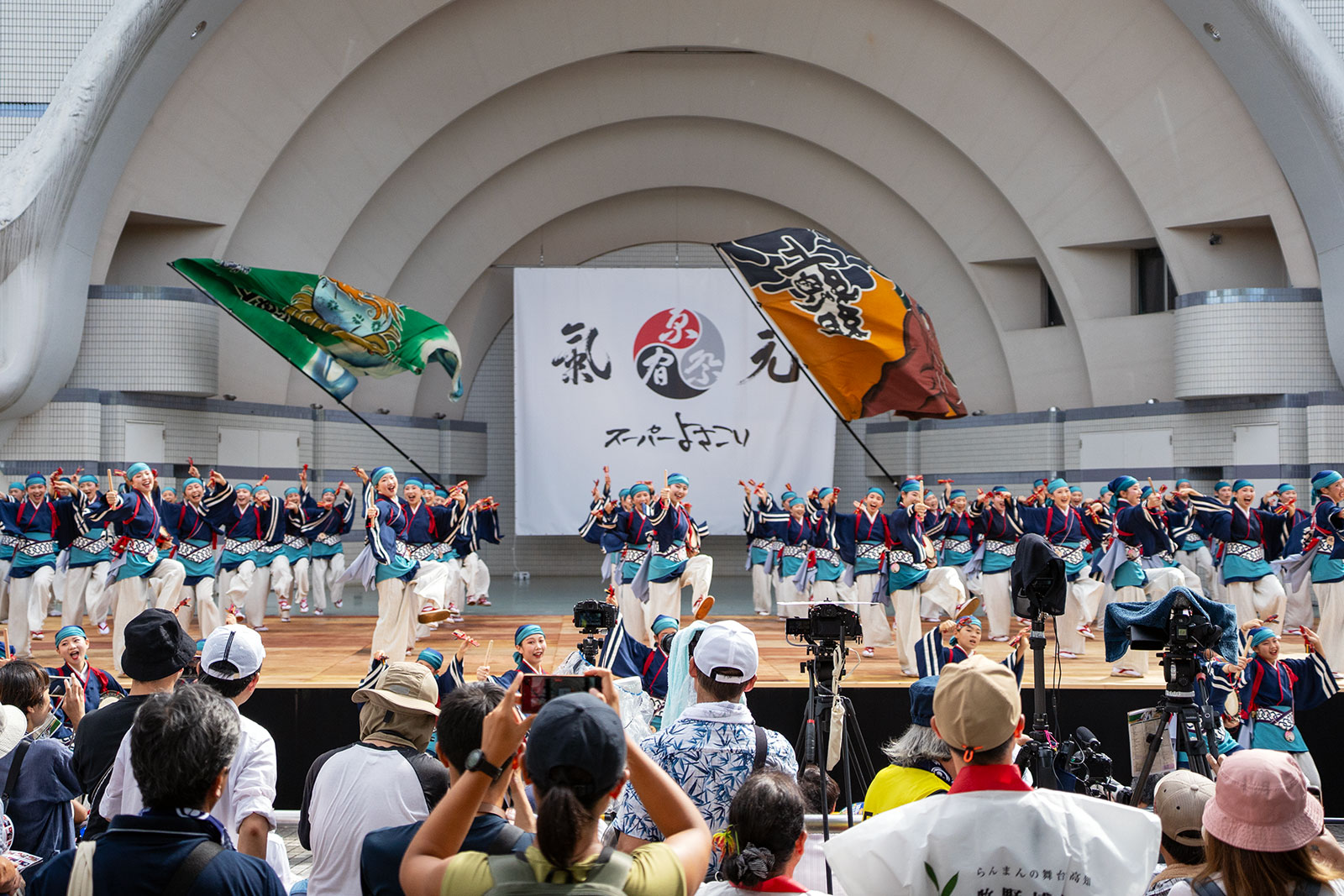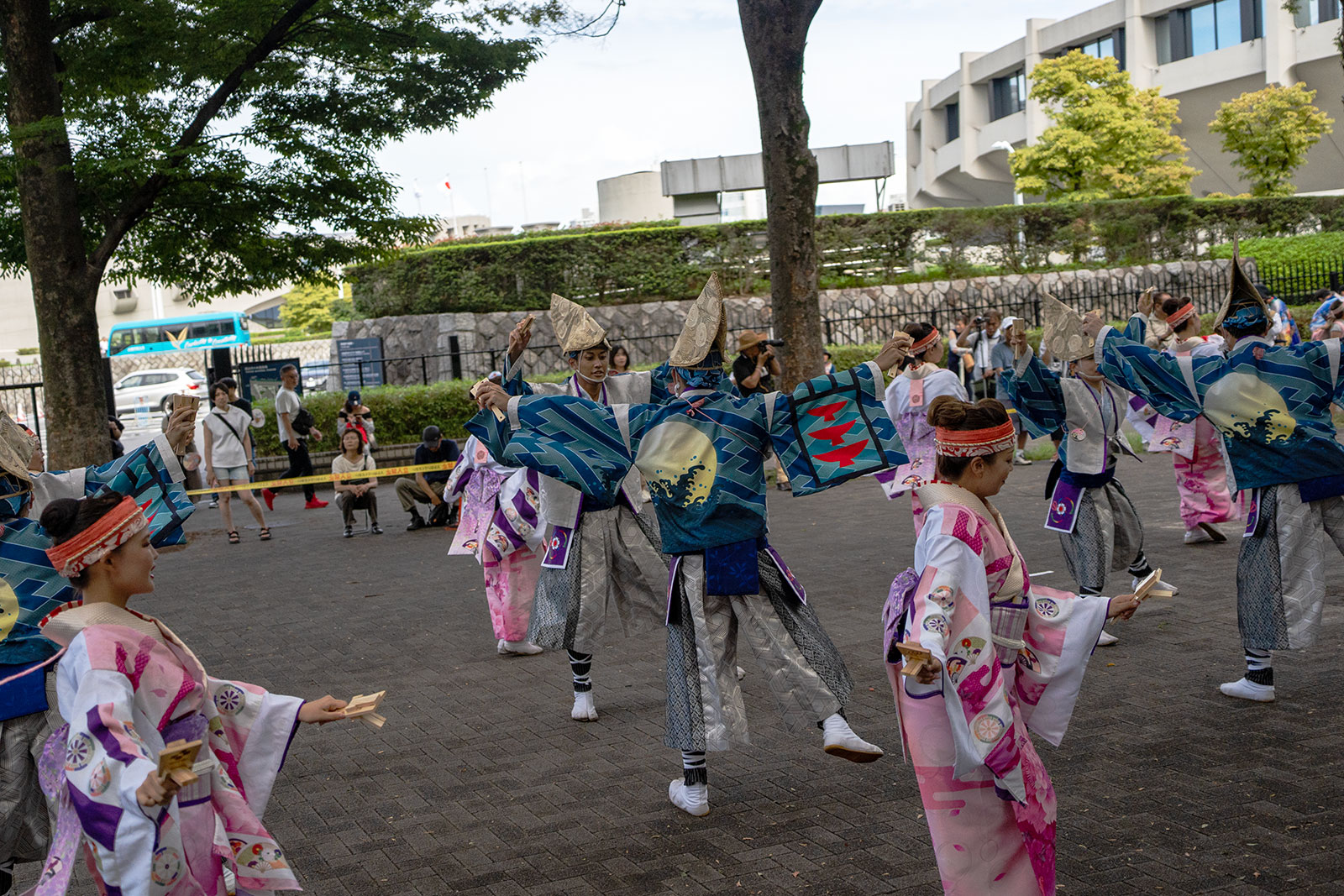
Sonica visits the 2023 Harajuku Omotesando Genki Matsuri Super Yosakoi
Sonica visits the 2023 Harajuku Omotesando Genki Matsuri Super Yosakoi
We are launching a semi-regular series of blog posts delving into the cultural and historical context surrounding Japanese instruments and traditional music as well as featuring practical tips on how to get the most from your Sonica Instruments libraries. This post explores the dance and music tradition known as yosakoi matsuri.
– The 2023 Harajuku Omotesando Genki Matsuri Super Yosakoi
Yosakoi matsuri, or festivals, feature highly choreographed and animated dances by teams of colorfully costumed dancers.
The 2023 Harajuku Omotesando Genki Matsuri Super Yosakoi was held after a four-year hiatus in its namesake Tokyo district on August 26 and 27. The Sonica Instruments development team was on hand to take in this extravaganza of music and dance.
Performance spaces were set up for the festival along Omotesando Avenue, in Yoyogi Park, at the Meiji Jingu Kaikan Hall, and other locations. In total, 103 yosakoi teams from Japan and abroad entertained the crowds with elaborate performances under a scorching sun.
– What is yosakoi?

Yosakoi dancing was developed in the city of Kochi in Kochi Prefecture in the 1950s, and the original Yosakoi Matsuri continues to be held each year in Kochi in early August. Yosakoi festivals have spread across the country, growing in popularity and complexity year by year.
Although some minor rules vary among different regions, what distinguishes yosakoi dancing is the use of small wooden naruko clappers [formerly used to scare birds away from rice fields] by the dancers as they dance to music often arranged using local folk songs. The other key requirement is that the music contain some part of the dance’s original melody called Yosakoi Naruko Odori [The Yosakoi Naruko Dance]. Apart from these basic rules, yosakoi teams have lots of leeway in selecting costumes, music, and choreography that show off their creativity and originality, to the delight of audiences.
Yosakoi dances are performed either on stages or as a parade, both of which have their own charm. Yosakoi parades are led by a sound-system truck called a jikata-sha. The parades feature large teams of up to 150 dancers adorned in multicolored outfits performing one highly energetic dance after another in the true spirit of yosakoi.
– Music that stands on its own
Music is an integral part of yosakoi, as teams develop their concepts, stories, and worldviews through the pairing of music and dance routines.
The foundations of yosakoi compositions are often modern dance or rock music, but with a Japanese twist — incorporating familiar sounds like the shamisen, taiko, koto, and kakegoe calls. The combination of all these elements create each dance’s unique tone and mood.
Yosakoi music is often so skillfully composed that you can enjoy it purely on its own. Music creators can find many valuable lessons in yosakoi music, especially in the phrasing and the use of instruments. If you get a chance, definitely watch a yosakoi matsuri in person, but also check out some of the music too.
– Here are the essential sounds you’ll need if you want to make your own yosakoi composition.
This KONTAKT library recreates the tsugaru shamisen’s dynamic and malleable sounds in all their glory — including stirring percussive sounds, powerful playing techniques, and blazingly fast hajiki picking.
KABUKI & NOH PERCUSSION 96k MASTER EDITION
The definitive collection of virtually every percussion instrument used in Kabuki and Noh theater as well as many types of kakegoe calls and Nohkan flute phrases.
This KONTAKT library recreates the legendary sound of the 13-string koto with a highly realistic playing sensation that virtually puts the strings under your fingers.
The 20-string koto is an indispensable part of modern Japanese music. This KONTACT library reproduces every nuance of the instrument’s gorgeous and weighty yet graceful tones.

